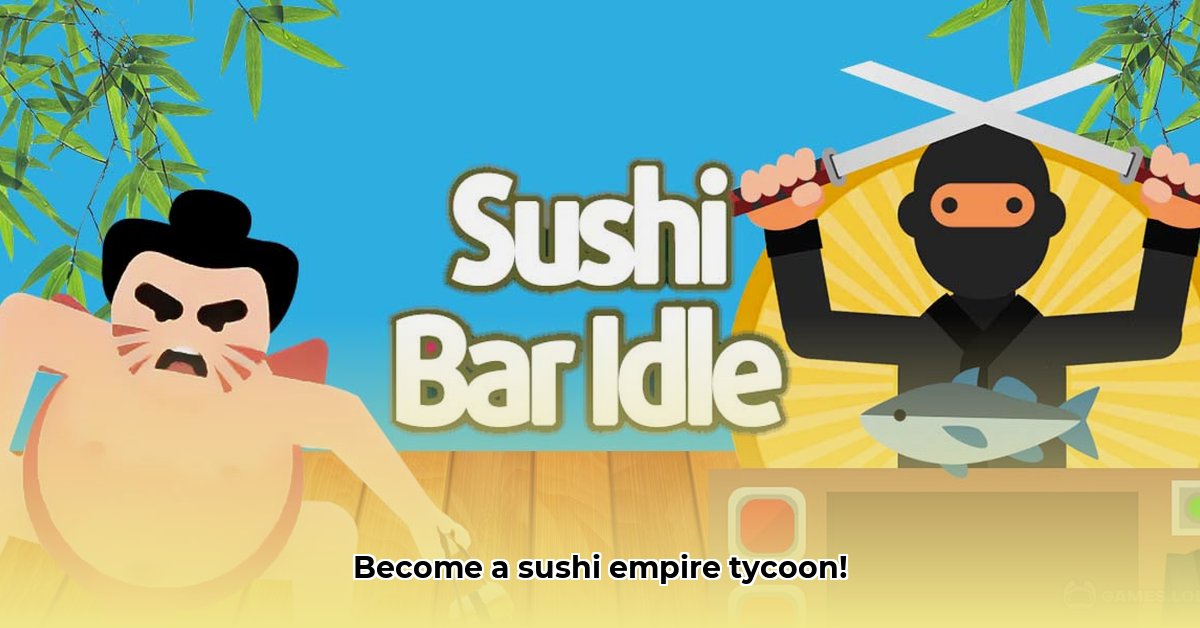
Gameplay: A Tale of Two Sushi Bars
The world of casual gaming offers a surprisingly delectable niche: sushi restaurant simulators. Two games dominate this space: "Sushi Bar" and "Sushi Bar Idle." While both aim to satisfy the player's inner sushi chef, their approaches differ dramatically, catering to distinct player preferences.
"Sushi Bar" plunges players into the frenetic energy of a real-world sushi restaurant. Imagine the rush: the conveyor belt whirring, customers clamoring for orders, and you, the chef, frantically slicing, rolling, and plating. It's a high-pressure, action-packed experience, demanding quick reflexes and efficient time management. Success comes from mastering the art of fulfilling orders swiftly and keeping customers happy. This fast-paced gameplay is perfect for players who thrive on challenge and immediate gratification. A single mistake can lead to a cascade of unsatisfied customers, creating a thrilling, sometimes stressful, but ultimately rewarding gameplay loop.
In stark contrast, "Sushi Bar Idle" offers a more relaxed, strategic experience. Here, you are the ultimate sushi tycoon, overseeing your growing empire from the comfort of your digital office. The focus shifts from direct, hands-on management to careful planning and strategic resource allocation. You optimize processes, expand your menu, and watch your profits steadily increase. This slower pace allows for careful consideration and long-term planning, appealing to players who prefer a more measured, strategic approach to gaming. The satisfaction comes from building a prosperous virtual empire, one strategic upgrade at a time. The question then becomes: do you prefer the adrenaline-pumping chaos of "Sushi Bar" or the calculated growth of "Sushi Bar Idle"?
Monetization: Balancing Fun and Profitability
"Sushi Bar Idle," typical of many idle games, primarily employs in-app purchases (IAPs) as its monetization strategy. This approach requires a careful balance: the game must remain enjoyable without excessively pressuring players to spend money. The delicate art lies in incentivizing IAPs without compromising the core gameplay experience. A poorly implemented IAP system can quickly sour an otherwise enjoyable game, driving players away. Unfortunately, detailed information regarding "Sushi Bar's" monetization is scarce, hindering a direct comparison. This underscores the crucial need for thorough testing and iterative adjustments to optimize revenue generation while maintaining player satisfaction. The effectiveness of both games' monetization strategies hinges on player perception of value and the careful integration of these systems into the overall gameplay experience.
Market Overview: A Growing Appetite for Virtual Sushi
The popularity of sushi-themed simulation games highlights a significant and growing market segment within the casual gaming landscape. The inherent visual appeal of sushi, combined with a broader interest in restaurant simulation games, creates a unique and attractive niche. However, the question of market saturation arises. While the market isn't completely saturated, the presence of established titles poses a challenge. There's certainly room for innovative games that offer unique mechanics, fresh perspectives, or compelling storylines. Underexplored realms within the sushi culinary world, like specialized regional styles or advanced preparation techniques, offer rich potential for creative game developers to carve out their own space.
Risk Assessment: Navigating the Virtual Kitchen
Developing a successful game, even in a seemingly lucrative niche, involves inherent risks. A crucial aspect of the development process is mitigating these risks proactively.
Key Risks & Mitigation Strategies:
- Market Saturation: (Medium Likelihood, Medium Impact) Diversify game features, focus on a unique selling proposition, and implement a strong marketing strategy.
- Negative Player Reviews: (Medium Likelihood, Medium Impact) Actively engage with the community, promptly address issues and bugs, and maintain a transparent communication channel.
- Monetization Challenges: (Medium Likelihood, High Impact) Rigorously test various monetization models (IAPs, ads, etc.), carefully observing player behavior and feedback.
- Competition: (High Likelihood, High Impact) Focus on a unique and engaging gameplay experience, differentiate your product clearly from existing titles, and continuously innovate.
- Development Costs: (High Likelihood, High Impact) Secure adequate funding, optimize development timelines, and prioritize essential features.
Future Trends: The Next Wave of Sushi Simulations
The future of sushi simulation games holds immense potential. We can anticipate several key trends:
- Enhanced Realism: Games may incorporate more realistic physics engines, allowing for more intricate sushi-making processes.
- Expanded Gameplay: More complex recipes, competitive multiplayer modes, and even VR/AR experiences could emerge.
- Unique Themes: Exploration of lesser-known sushi styles or regions could open new avenues of innovation.
The success of future games will depend on continuous adaptation and innovation, a keen understanding of player preferences, and a willingness to respond to feedback.
Conclusion: A Recipe for Success
The market for sushi restaurant simulation games is far from fully realized. By meticulously addressing gameplay, monetization, and risk management, developers can create games that are both commercially successful and deeply engaging for players. The key ingredients for success are creativity, a player-centric approach, and a constant commitment to innovation within this increasingly popular niche.
⭐⭐⭐⭐☆ (4.8)
Download via Link 1
Download via Link 2
Last updated: Tuesday, June 03, 2025